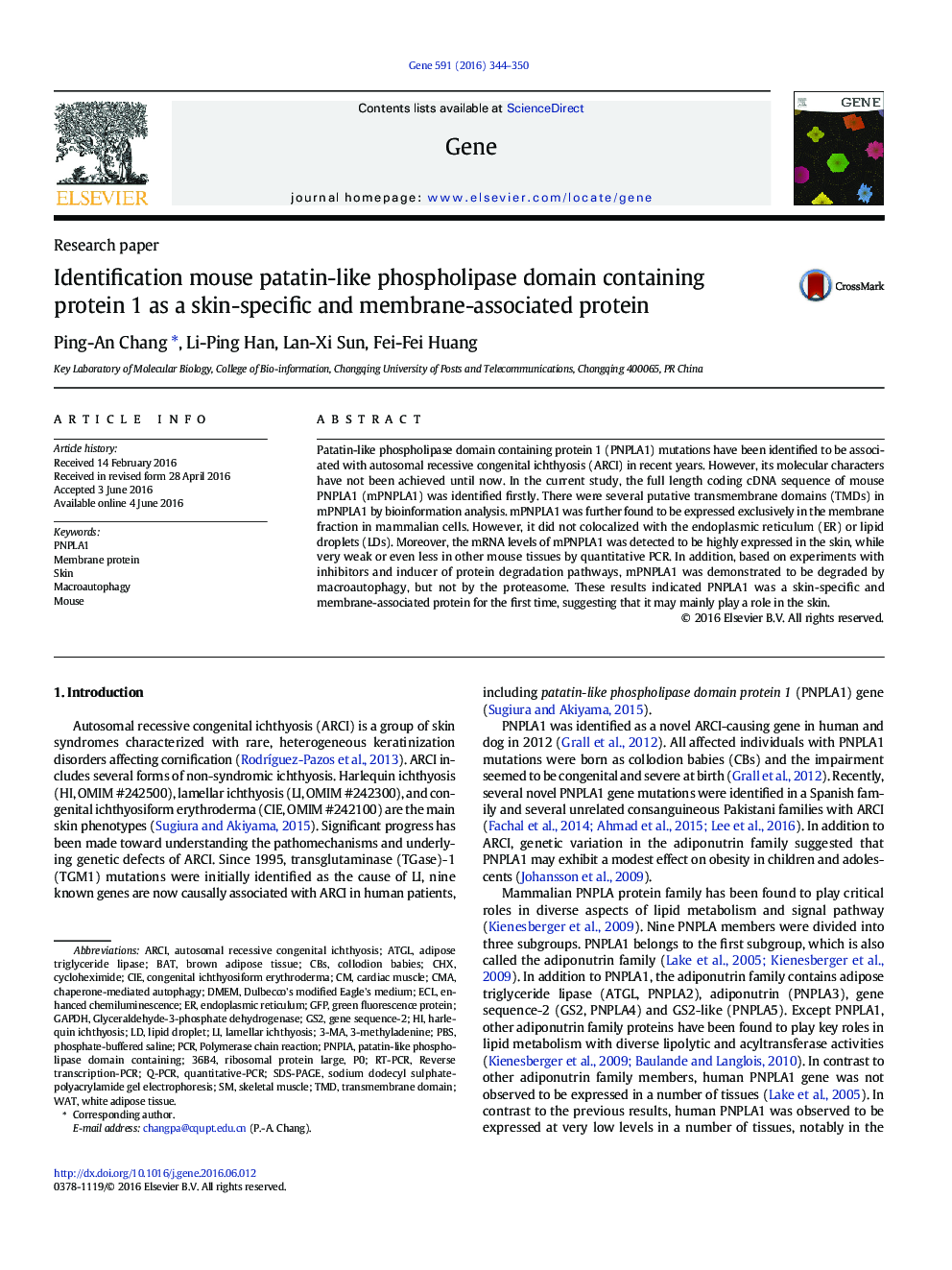| Article ID | Journal | Published Year | Pages | File Type |
|---|---|---|---|---|
| 2814783 | Gene | 2016 | 7 Pages |
•mPNPLA1 is a membrane-associated protein.•mPNPLA1 does not colocalize with the endoplasmic reticulum or lipid droplet.•PNPLA1 is specifically expressed in mouse skin.•mPNPLA1 is degraded by macroautophagy, but not by the proteasome.
Patatin-like phospholipase domain containing protein 1 (PNPLA1) mutations have been identified to be associated with autosomal recessive congenital ichthyosis (ARCI) in recent years. However, its molecular characters have not been achieved until now. In the current study, the full length coding cDNA sequence of mouse PNPLA1 (mPNPLA1) was identified firstly. There were several putative transmembrane domains (TMDs) in mPNPLA1 by bioinformation analysis. mPNPLA1 was further found to be expressed exclusively in the membrane fraction in mammalian cells. However, it did not colocalized with the endoplasmic reticulum (ER) or lipid droplets (LDs). Moreover, the mRNA levels of mPNPLA1 was detected to be highly expressed in the skin, while very weak or even less in other mouse tissues by quantitative PCR. In addition, based on experiments with inhibitors and inducer of protein degradation pathways, mPNPLA1 was demonstrated to be degraded by macroautophagy, but not by the proteasome. These results indicated PNPLA1 was a skin-specific and membrane-associated protein for the first time, suggesting that it may mainly play a role in the skin.
